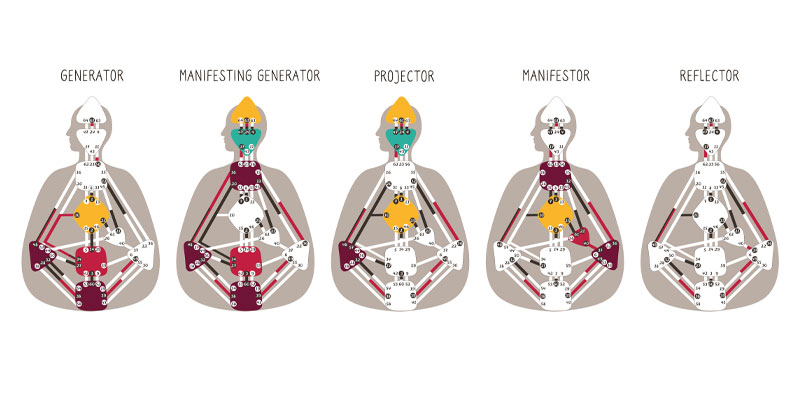Human Design may feel like a complex concept to understand — indeed, it stems from a number of different disciplines from both the ancient and modern worlds and will set you on a path to self-enlightenment. But, in practice, Human Design is actually a simple, holistic system based on one guiding principle: Differentiation.
To put it simply, it can be thought of as the ‘science of differentiation’.
Human Design: What Makes You Different From Everyone Else?
Human Design seeks to answer this fundamental question. It offers profound psychological insights that will, in turn, help you make the best choices for yourself at the right time, leading you towards a better and more fulfilled life. This is called ‘signature satisfaction’. It is a key concept that essentially means living fully in accordance with your individual nature.

Is Human Design a Religion?
In short, no. While Human Design does draw on spiritual wisdom throughout the ages, it is an inherently empirical practice that involves science and psychology. It was developed in the 1980s by Ra Uru Hu, the founder of the system, and has since been validated by scientific findings.
For example, in 2015, scientists discovered the neutrino, a special, infinitesimal particle and a key underpinning of the science of Human Design, actually has mass. Trillions of neutrinos pass — or flow — through every square inch of the planet and every living thing on it every second. Where each individual human is concerned, this equates to about 100 trillion neutrinos passing through us in a single second. This is best thought of as a stream of neutrino particles that animate every human body. This can also be viewed as a stream of information imprinted on us at birth and which connects us to the planets and celestial bodies that are the source of the neutrino streams.
It is the imprint made by the neutrino stream that makes each of us unique because it manifests differently in each person. It is this uniqueness that is captured in a Human Design chart in order to receive knowledge about who we are and our conditioning.

All the while, spiritual concepts and symbols remain central to the Human Design system.
The mandala is intrinsic in the Human Design chart (illustrated above), serving as a visual representation of the system. The inner wheel of the mandala represents the 12 signs of the western zodiac while the outer wheel represents the 64 hexagrams of the I Ching, the archetypal energies which are related to our genetic code (the 64 codons of our DNA).
At the centre of the mandala is the Bodygraph, a map of the human body made up of nine centres, 36 channels and 64 gates.

Of these centres, some are Defined and others are Open. It is the Open centres that can be influenced by outside influence and thus impact your mind’s decision-making process. Therefore, it is these Open centres that are important in Human Design and its ultimate goal of helping you to make the right decisions for you.
Knowledge of where your Open centres are located will help you to cease making decisions based on conditioned strategies and, instead, to make strategies based on the desires and needs of your authentic self. In the Human Design System, the antithesis of your authentic self is known as the Not Self. One of the primary objectives of the Human Design System is to combat the manifestation of the Not Self.
A personalised Human Design chart can help each individual define their type within the system. This type is reflective of their aura and their conditioning. The chart will contain a unique configuration of Open and Defined centres and, thus, its own unique system of conditioning. It will help you identify the Not Self in order to avoid decision-making that doesn’t serve your authentic self.
In Human Design, you will fall into one of five types, as illustrated below:

Once ignorance of your conditioning is alleviated, you then have the potential to achieve your type signature: the state of living that is true to your type. Each type also has a signature theme - satisfaction, success, peace, or surprise - and a corresponding Not Self theme - frustration, bitterness, anger, and disappointment.
The path of discovery inspired by Human Design, in the hopes of achieving your signature theme, takes time. There are many different techniques and theories that await you on this road to betterment. You can learn more about constructing your Human Design chart and discovering your type in the Human Design Diploma Course with Centre of Excellence.
After all, the road to self-discovery truly begins when an individual’s type is identified. Good luck!
At the time of publishing, entering the code LEARNING in the checkout will reduce the price of our
Human Design Diploma Course to £29.





